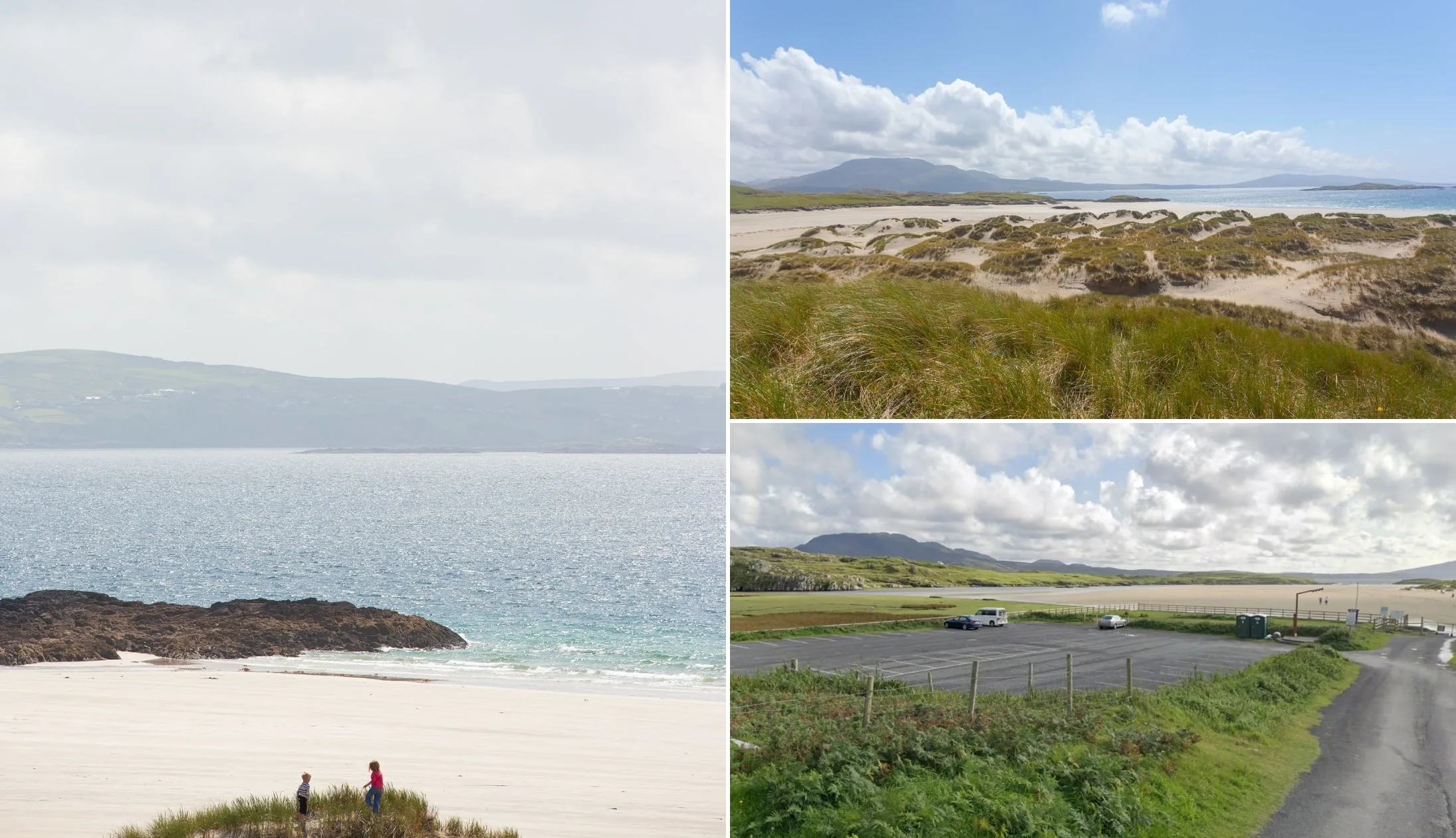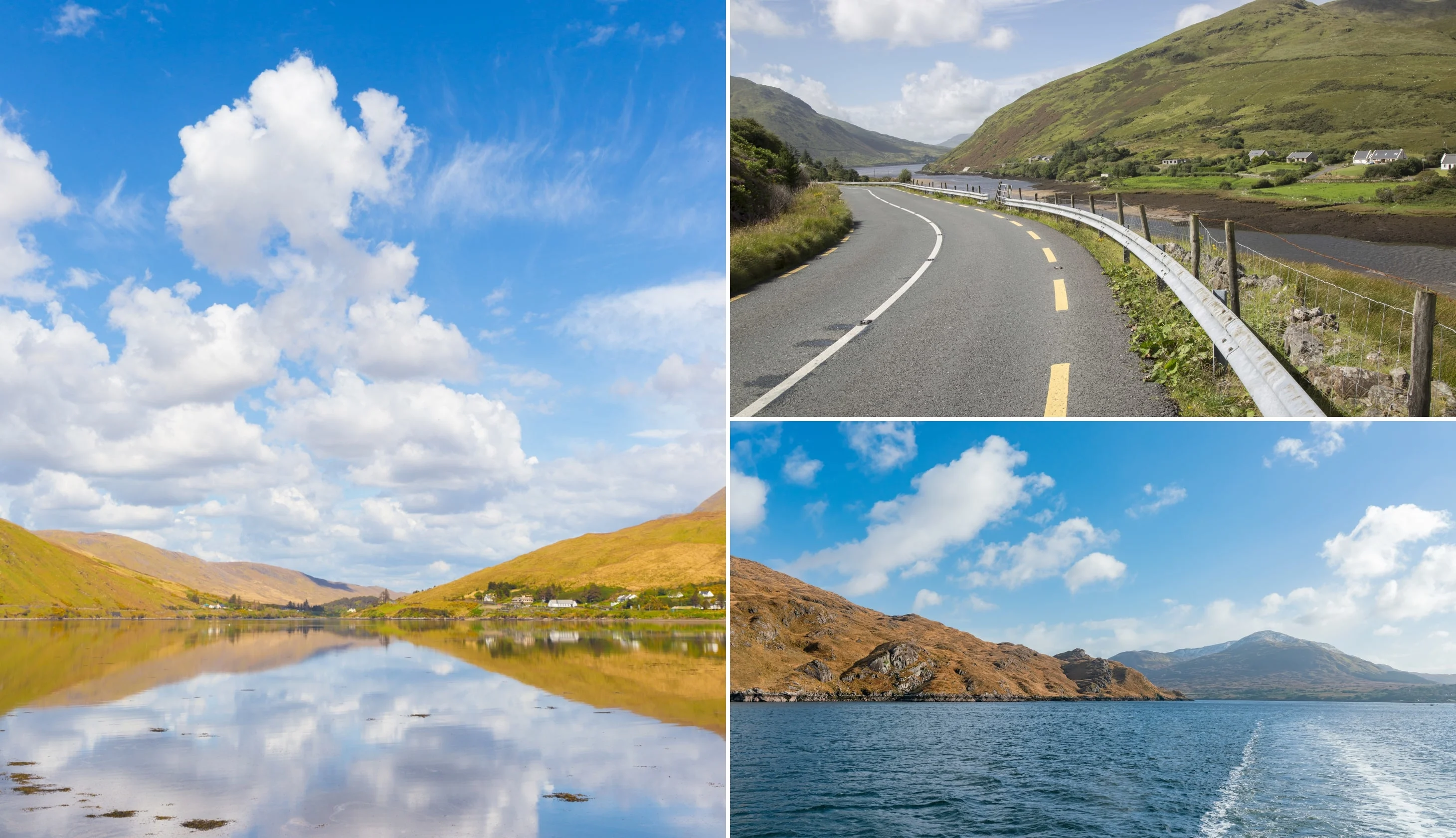Mayo’s Lost Valley is a place of rugged natural beauty, historic importance and, while words alone don’t do it justice, I’ll give it a good go!
It’s here that you’ll be treated to an eye-opening experience in which you’ll learn about Ireland’s past, the harsh realities of the Great Famine, and the ways of the world in one of Ireland’s most rural areas.
There’s a 3-hour tour that you can take here where you’ll see beaches, a fjord and some spectacular scenery. Discover everything you need-to-know below!
Some quick need-to-knows about the Lost Valley in Mayo
A visit to the Lost Valley in Mayo isn’t as straightforward as some of the county’s other attractions, as it’s set on private land. Here is some key info:
1. Location
The Lost Valley is located a 20-minute drive from Louisburgh, near Silver Strand Beach. It’s a 25-minute drive from Westport and a 35-minute drive from Leenaun.
2. Unparalleled beauty
Tamed by the Atlantic Ocean, the area around the Lost Valley is absolutely stunning in its ruggedness. Rolling green fields, sandy beaches, craggy coves, and lush waterfalls abound, all to a backdrop of looming mountains. Stone ruins dot the landscape, a stark reminder that in the end, nature conquers all.
3. The private tour
The only way to see the Lost Valley is on one of the 3-hour guided tours. Run by the Bourke family, the tour takes you on various trails as your guide recounts the history of the valley, and the hardships its people faced in the past.
4. Price
At the time of typing, tickets cost:
- Adults: €25
- Children: €10
- Family Ticket: €60
About The Lost Valley and the story of the Bourkes

Photos via the Lost Valley
The Lost Valley is one of Ireland’s hidden gems, and it offers a really eye-opening experience.
Situated amid breathtaking natural scenery, the area takes in woodlands, beaches, coves, mountains, lakes, rivers, fjords, and even waterfalls.
A visit to the deserted village provides a cultural insight into the struggles faced by the hardy people who once called the valley home.
Though once abandoned, as communities were forced out by the great famine, the valley is now cared for once again.
In fact, the Bourke family have been farming livestock in the valley for more than 300 hundred years.
Nowadays, they run a working farm on the site, and offer a glimpse into the daily life of a rural farmer in the west of Ireland.
Things you’ll see on the Lost Valley tour
As a working farm, it’s essential to book your visit to the Lost Valley in advance.
Both group and individual bookings are accepted. Here’s what you can expect to discover on the awe-inspiring 3-hour tour.
1. Silver Strand Beach

Photo left and top right: Kelvin Gillmor. Other: Google Maps
Arguably one of the finest beaches in Mayo, the Lost Valley tour will take you to Silver Strand Beach on the northern border of the Valley.
The location for many movie and adverts, it’s a beautiful sandy beach, with craggy rocks, and glorious blue waters.
2. Killary Fjord

Photos via Shutterstock
The southern border of the Lost Valley is made up of Ireland’s only Fjord, Killary.
Creeping 16 km (10 miles) inland, the fjord offers breathtaking views.
There’s a harbour in the Fjord, and it’s possible to take boat trips on the tranquil waters.
4. Flora galore

Photos via the Lost Valley
The lost valley is awash with hardy plant life, doing battle with the harsh conditions to retain a grip on the land.
Old apple trees survive in the abandoned village, while woodlands are slowly becoming established, gradually swallowing up the old houses.
Hazel, oak, ash, silver birch, and rowan trees are all braving the elements, while bracken and wild flowers cover the ground.
Foragers would have a field day, with wild mint, wood sorrel, mountain thyme, bog myrtle, and much more growing across the landscape.
5. The deserted village

The deserted village stands in memorial to the victims of the great famine. Abandoned in around 1850 as the famine ended, many of the surviving residents were cruelly evicted.
The old cottages and farms remain as they were left, with acres of potato ridges untouched for more than 200 years. The village was called Uggool, which translates to the Eagle’s Egg.
Wandering through the ruins takes you back in time, offering a glimpse at life from another era, while the crushing silence of the area serves to remind that all things will change.
Things to do near the Lost Valley
One of the beauties of the Lost Valley is that it’s a short spin away from many of the best things to do in Mayo.
Below, you’ll find a handful of things to see and do a stone’s throw from the valley.
1. Doolough Valley

Photos via Shutterstock
A drive through the Doolough Valley is absolutely spectacular. Starting in Louisburg, the road passes through incredible landscapes that take in rugged mountains, glistening lakes, and gushing rivers. The road ends at Leenane, on the banks of Killary Fjord.
2. Islands

Photos via Shutterstock
You’ll find Roonagh Pier just under 30 minutes from the Lost Valley, and it’s from here that you can grab a ferry to Inishturk Island and Clare Island, both of which are well-worth exploring on a day trip or over the course of a weekend.
3. Croagh Patrick

Photos via Shutterstock
Croagh Patrick is a tough but rewarding mountain to climb, offering views across County Mayo and Clew Bay. The views you’re treated to on a clear day are out of this world. You can also visit nearby Westport, too. Here are some guides to drop into:
- 19 of the best things to do in Westport
- 11 of our favourite restaurants in Westport
- 10 mighty old-school pubs in Westport
- 11 of the best hotels in Westport
- 9 brilliant B&Bs in Westport


